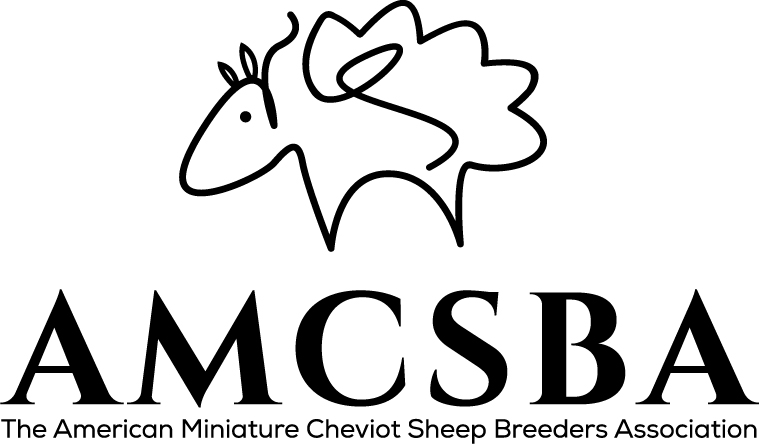
Registry & Forms
IMPORTANT!!!
Please make sure your sheep are tagged or tattooed with visible identification when registering them. It is extremely difficult to match unidentified sheep with their registration certificates after they are sold (and sold again). Sheep like this do wind up at auction, as they are essentially not registered.
AMCSBA membership $10: As of 01/01/2022, a paid membership will be required to register sheep. The yearly cost of a membership is $10. Membership is valid from January 1st – December 31st of each year. No membership dues are required to transfer sheep.
Registration Timelines:
To qualify for the $7 registration fee, a lamb must be registered during its birth year. This does not provide a 12 month window of registration from the time of birth. Rather, a lamb must be registered during the same calendar year. Sheep registered after their birth year are subject to an increased registration fee. The fee increase is levied to encourage breeders to register their lambs in a timely manner.
It is important to register lambs during their birth year, as the registry generates year-end statistics. When lambs are registered late, the reports must be revised. Accurate statistics provide important breed information (birth numbers, colors, sexes, multiples, etc.). Please, let’s all do our part to maintain the accuracy of our registry statistics.
Breeder Responsibilities:
It is each breeder’s responsibility to register lambs before selling them. Buyers should avoid purchasing lambs pending registration. Lambs cannot be registered by buyers, only breeders. Buyers may contact asregistry@gmail.com to confirm registry status of any lambs they may wish to purchase. However, AMCSBA does not oversee the business practices of individual breeders, nor does it mediate.
For more information please contact asregistry@gmail.com.
Thanks, and have a productive lambing season!
REGISTRATION APPLICATION INSTRUCTIONS
Please fill out the application and work order completely. Make check payable to: Eddie Miller, Registrar.
Transfers
Buyers: To transfer ownership of an animal you purchased (you already have a certificate of registration), please complete the first available Certificate of Transfer section on your certificate, and submit it, along with a completed Work Order and Fee Schedule to the registry. The fee is $5 per transfer. No member dues are required for transfer. Your information will be recorded in the registry database, and your certificate will be signed, dated, and returned to you.
Sellers: For transfers completed by the seller at the time of registration, on behalf of the buyer, see below.
New Registrations
Note: lambs must be registered by December 31st of their birth year in order to qualify for the $7 registration fee. A sheep that is registered after its year of birth is subject to a registration fee of $10.
Sheep Registration Application
a) The registration application allows you to enter up to 7 sheep on one page. The first entry is an example.
b) Enter the name of the animal, prefixed by the farm name, if applicable: Example: Bee Skep Ranch Dylan. If no name is given, please enter the ear tag number or tattoo, prefixed by the last name. Example: Miller NV000000.
c) Enter the ear tag number. REQUIRED. Any ear tag or tattoo that identifies this sheep as an individual is acceptable. For example, you may use its USDA Scrapie Tag number, or a farm ear tag number. For more information about the Federal Scrapie Eradication Program, and associated ear tags, please contact the USDA. Applications lacking ear tag or tattoo numbers will be returned to the applicant for completion.
d) Enter the animal’s sex (R=Ram; E=Ewe; W=Wether).
e) Enter the animal’s date of birth.
f ) Enter type of birth (single, twin, or triplet).
g) Enter the animal’s color (B=Black; W=White; D=Dilute).
h) Enter the AMCSBA registration number of the Sire.*
i ) Enter the AMCSBA registration number of the Dam.*
*AMCSBA only accepts offspring of registered parents. Please enter the parents’ registration numbers. If the animal or its parents are registered with these associations: MNSBAR (Miniature & Novelty…) or ACSS (American Cheviot…), please include the documentation and photos required per rule 10 of the AMCSBA Association Rules (Other Registered Cheviot Sheep-ORCS). The Registrar reserves the right to review, and accept or deny registrations deemed inconsistent with its registry rules and breed standards.
j) Enter the registration fees: $7 or $10.
k) Seller Completing Transfer on Behalf of Buyer— include $5 for the transfer, and use the NOTES section to include the buyers name, address, phone number, and e-mail. Indicate if you would like the registry to forward the certificate to the new owner. If no indication is made, the certificate will be mailed to the applicant.
l) The NOTES section may also be used to include any clarifications or special instructions/requests.
m) Enter the total amount owed. Please make your check payable to Eddie A. Miller, Registrar, or pay by entering your credit card information on the Work Order and Fee Schedule.
n) Fill in name, farm name, contact info, including e-mail and website, if applicable.
o) Sign and date.
p) Complete a Work Order and Fee Schedule to accompany your application.
BREED STANDARDS
General
- Appearance– alert, active, graceful and symmetrical, with a stylish, lively carriage. Sheep can be shown in full fleece and long tail, full fleece and short tail. When showing as a meat animal, sheep may be shown in the usual manner, slick sheared, with long or short tail.
- Form– straight top and underline; moderate depth and width; well proportioned. Legs are apart and well set. Bone is adequate.
- Size– Maximum height at two years old is 23” at the top of the shoulder when sheared. Mature ewes 45 lbs-85 lbs; mature rams 55 lbs-100 lbs.
- Temperament– mild mannered. Some individuals may be standoffish but not flighty as a whole.
- Reproduction– Ewes generally bear lambs without assistance; twins are not uncommon; triplets are rare.
Head & Neck
- Head– medium in length, broad, then tapering to the muzzle, with ample width between the eyes; no wool forward of the ears or jaw. Small facial markings are acceptable. Both ewes and rams are polled.
- Eyes– large, clear and alert with dark pigment preferred around the eyes.
- Ears– sharp, erect, and of small to medium length.
- Nose– straight, slightly arched and may more strongly arched or Roman in the rams. The nostrils are large and black.
- Mouth– well-formed with an even bite; teeth align properly with the dental pad.
- Neck– is medium length and properly proportioned with the body. Smoothly joins the head to the body at the shoulder.
Forequarters
- Shoulders– compact on top, well covered and smoothly join with the neck and body.
- Breast– clean through the front with adequate capacity fitting well onto the neck and brisket.
Body
- Back– straight, broad, evenly and thickly covered.
- Heart girth– full and deep.
- Ribs– well sprung and covered.
- Loins– wide, deep, well covered, blending well onto a strong rump.
- Skin– tight without excessive rolls or folds.
Hindquarters
- Hips– wide apart, level and smooth.
- Rump– level, wide and well carried out to the dock
- Thighs– full, deep and wide.
- Legs– set well with adequate inner and outer leg muscling. Small leg markings are acceptable. The hooves should be black.
- Udder/Scrotum– well formed, symmetrical and well developed.
- Tail– may be left natural as is done in parts of the U.K., or it may docked at the end of the inner webbing (wool-less area) on the underside of the tail. The tail, when left undocked, should at least sweep the hocks and be straight. Note: the American Miniature Cheviot Sheep Breeders Association endorses tail docking in order to prevent flystrike and related diseases.
Fleece
- The wool has a natural crispness and slight luster in its appearance. The fleece is medium to long (3″ to 7″ in length) in white, black, tan, or dilute. As of 2008, the registry has added the painted designation. Painted sheep display two or more colors, clearly defined as spots, swatches, stripes, or streaks on the fleece.
- Fleece is dense and even, covering body completely from behind the poll and ears where it often forms a ruff to above the knees and hocks, including the belly. The balance of the body is covered with a fine, shiny short hair; no wool on face or legs. Wool grade: 1/4 – 3/8 blood; 48’s to 58’s; 25-32 microns.
Points given for showing
- General Appearance 20 pts
- Head & Neck 20 pts
- Forequarters 10 pts
- Body 20 pts
- Hindquarters 20 pts
- Fleece 10 pts
Questionable characteristics (not disqualifying unless present in a high degree)
- Scurs on rams
- Overly large ears
- Bare belly
- Wool on face or legs
- Excessive kemp
- Excessive folds on head or neck
- Pink or white hooves
- Nose not totally black
- Split scrotum
Characteristics which must disqualify an otherwise good sheep
- Over 23” tall at the shoulder, when sheared.
- Horns on rams or ewes; scurs on ewes.
- Deformed mouth (under or over shot jaw)
- Splayed hooves
- Totally pink nose
- Deformed or missing teats in ewes – must have at least two teats.
- Deformed or missing testes in rams.
- Bad temperament or aggressive behavior from either ewes or rams.
- Black spots on white wool or white spots on black or colored wool (does not apply to sheep registered as painted specimens).

